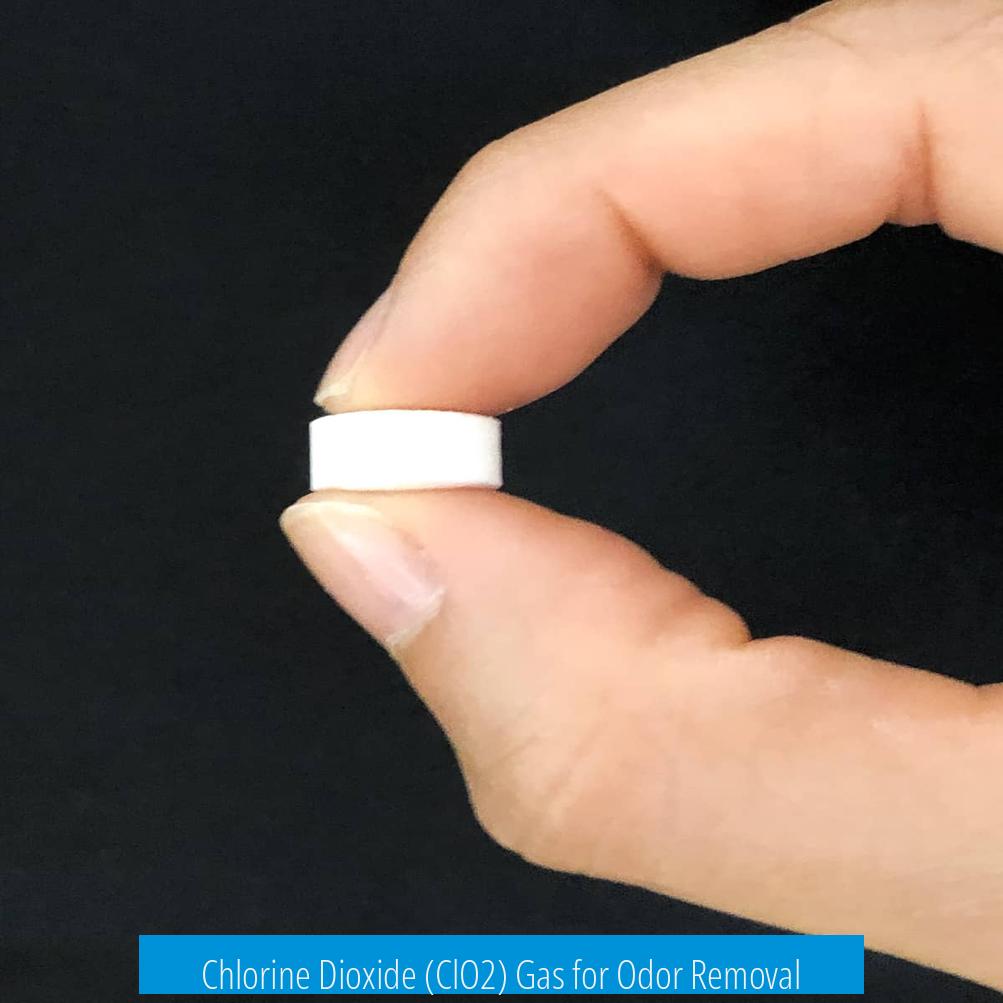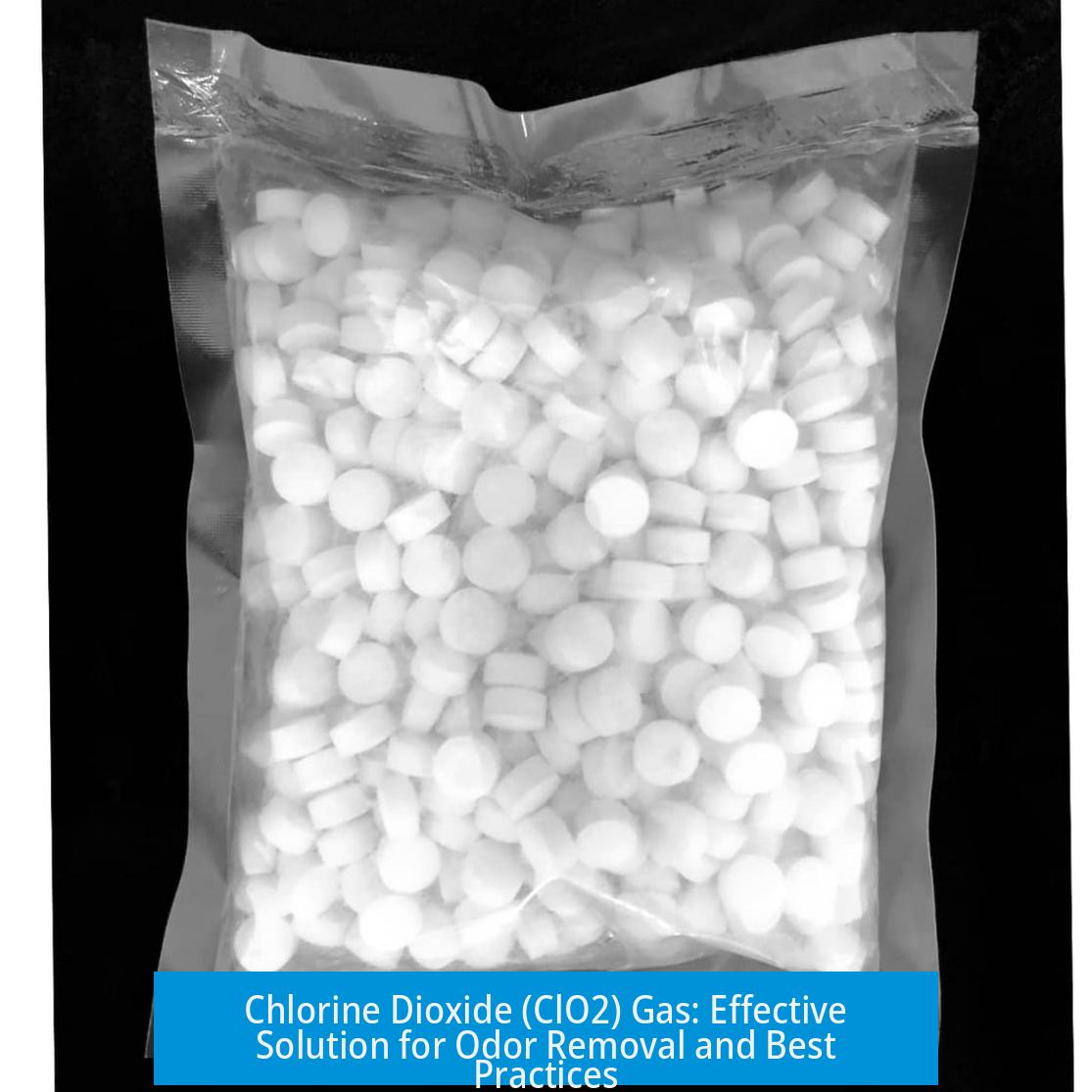Chlorine Dioxide (ClO2) Gas for Odor Removal
 Chlorine dioxide (ClO2) gas is an effective and safe agent for odor removal, particularly in whole-house treatments, breaking down quickly without leaving harmful residues. Proper use ensures fast action with minimal health risks, though attention to byproducts and ventilation is crucial to avoid secondary odors or irritants.
Chlorine dioxide (ClO2) gas is an effective and safe agent for odor removal, particularly in whole-house treatments, breaking down quickly without leaving harmful residues. Proper use ensures fast action with minimal health risks, though attention to byproducts and ventilation is crucial to avoid secondary odors or irritants.
Use and Effectiveness of ClO2 Gas in Odor Removal
Chlorine dioxide gas is widely employed in whole-house deodorizing to eliminate stubborn odors. Treatments usually last 2-3 hours under controlled conditions. After treatment, operators measure residual toxic gases to confirm levels are less than 10% of regulated safe exposure limits. This ensures the environment is at least ten times safer than the minimum standards require.
The process rapidly neutralizes odor-causing compounds without prolonged presence of ClO2 in the air. It is considered safe when performed by trained personnel with proper ventilation protocols in place.
Rapid Breakdown and Dispersal of ClO2 Gas
Chlorine dioxide decomposes quickly in ambient conditions. Exposure to sunlight, water, and air humidity accelerates its conversion into harmless substances such as salt and water. Typically, any detectable ClO2 disappears within hours after treatment completion.
ClO2 does not accumulate in building reservoirs such as basements or HVAC systems. Consequently, persistent bleach-like odors within the home are rarely due to residual chlorine dioxide.
Addressing Lingering Odors After ClO2 Treatment
If residual odors remain, simple methods to speed up ClO2 dissipation involve enhancing air circulation:
- Turn on air conditioning fans and ceiling fans.
- Open windows to facilitate cross-ventilation.
- Use shop or pedestal fans directed outwards to expel indoor air.
- Create turbulent airflow to mix indoor air and dilute odors.
Activated carbon filters do not effectively remove ClO2 gas because airflow through the carbon is limited. Mechanical ventilation remains the key intervention.
Byproducts from ClO2 Reactions with Organic Residues
When chlorine dioxide comes into contact with organic compounds, especially nitrogen-containing residues such as urine, it can produce harmful byproducts. Examples include:
- Trichloramine
- Cyanogen chloride
These chlorinated compounds may cause persistent odors, sinus irritation, and other health symptoms. Amino and amine residues in homes can similarly chlorinate, releasing harmful chemicals over time. This may explain lingering bleach-like smells often mistaken for ClO2.
Best Practices for ClO2 Odor Removal
For effective deodorizing, thorough cleaning is essential prior to and following ClO2 treatment. Removing organic residues reduces formation of adverse chlorinated byproducts. Additionally, using unscented or fragrance-free cleaning products minimizes the risk of future chemical interactions.
Maintaining proper ventilation after treatment further supports safe and rapid odor dispersal.
Comparisons and Warnings: Ozone vs. ClO2
Unlike chlorine dioxide, ozone is not recommended for indoor odor removal. Ozone tends to react aggressively with common household chemicals, forming hazardous substances. For example, ozone generated in clothes dryers with scented laundry detergents can create toxic byproducts that cling to fabrics.
Opening windows and using fans presents a safer and effective alternative to manage odors. Ozone devices may worsen indoor air quality rather than improve it.
Perception of ClO2 Odor
Some describe residual ClO2 odor as faintly resembling the smell of a swimming pool. This faint aroma is generally mild and dissipates quickly. Reports of strong bleach-like smells after treatment may be psychological or attributable to byproducts, not the chlorine dioxide itself.
Summary of Key Points
- Chlorine dioxide gas efficiently removes odors in whole-house treatments within a few hours.
- It breaks down rapidly into neutral compounds; it does not build up in home spaces.
- Effective ventilation accelerates ClO2 odor dissipation; activated carbon filters are ineffective.
- Chlorination of urine and organic residues can produce harmful byproducts causing persistent odors and irritation.
- Thorough cleaning and use of fragrance-free products help prevent unwanted chemical reactions.
- Ozone is not recommended due to formation of toxic compounds and inferior safety profile.
- Residual ClO2 odor tends to be faint and short-lived, similar to a pool smell rather than bleach.
What makes chlorine dioxide (ClO2) safe for whole-house odor removal treatments?
ClO2 treatments take just 2-3 hours and are followed by testing to ensure toxin levels stay below 10% of safe exposure limits. This strict safety margin makes the process reliable for household use.
Why does chlorine dioxide odor disappear quickly after treatment?
ClO2 breaks down fast when exposed to sunlight, water, or humidity, usually within a few hours. It does not build up in basements or HVAC ducts and turns into harmless substances like salt and water.
How can I speed up removal of lingering ClO2 smell in my home?
Activated carbon filters won’t help because air must move through them. Instead, increase airflow by running fans, air conditioning, and open windows. Using shop fans to push air out helps dilute and remove odors faster.
Can chlorine dioxide create harmful byproducts after reacting with urine or residues?
Yes. When ClO2 interacts with urine or amino residues, it can form chemicals like trichloramine and cyanogen chloride. These byproducts may cause persistent smells and sinus irritation even after treatment.
Why is ozone not recommended for odor removal compared to ClO2?
Ozone can react with household chemicals to form more toxic compounds. Rather than ozone, open windows and use fans for ventilation. Ozone from dryers can worsen chemical exposure from scented laundry products.





Leave a Comment